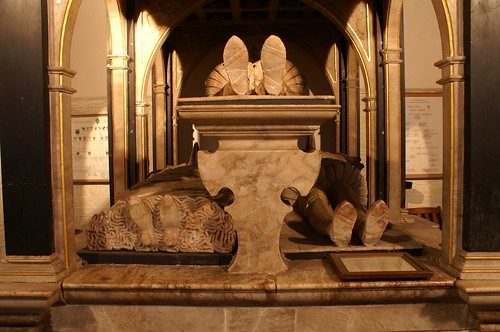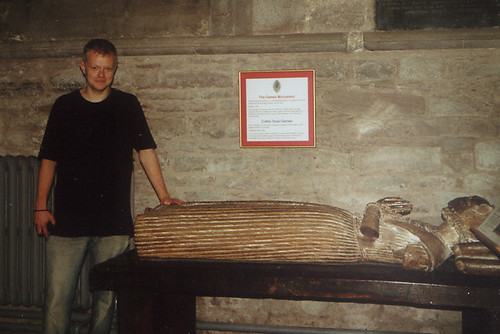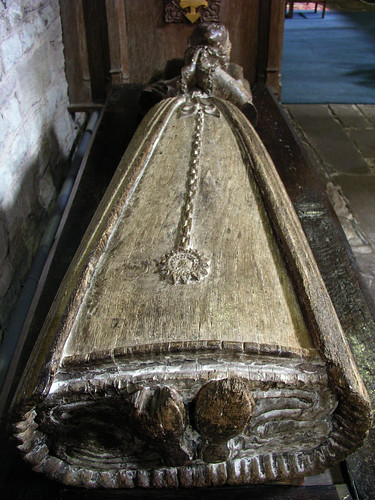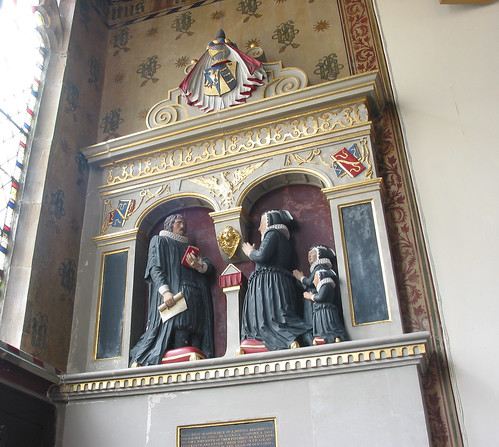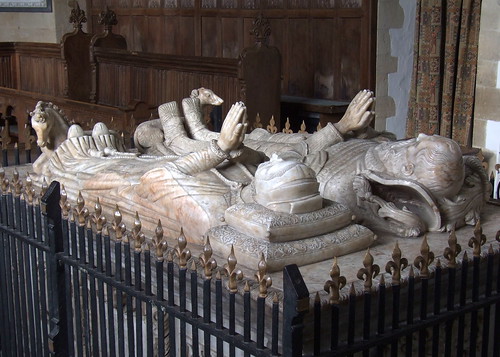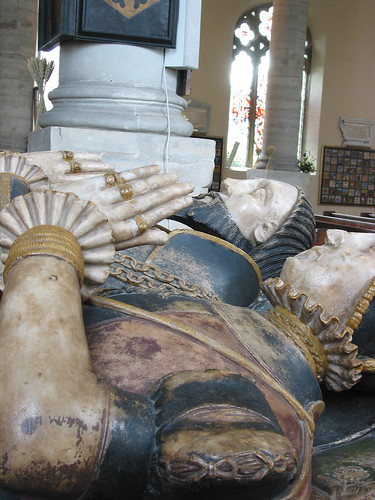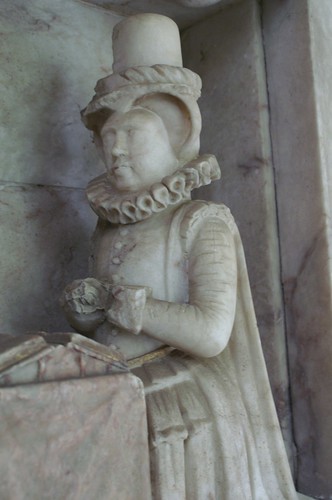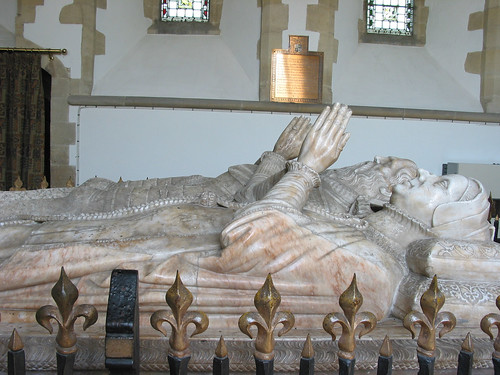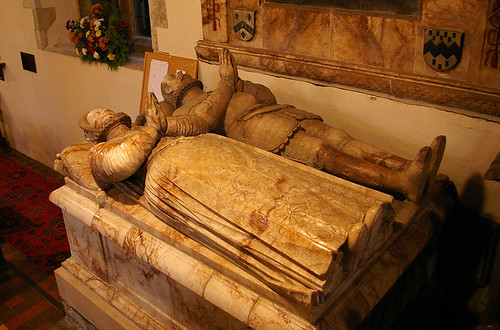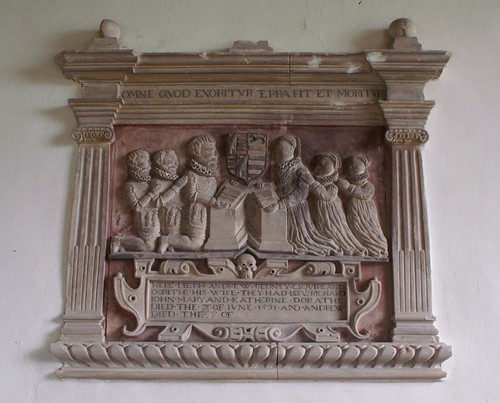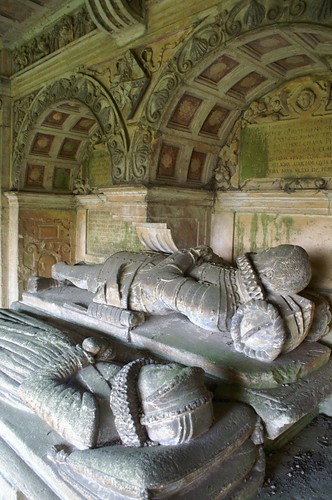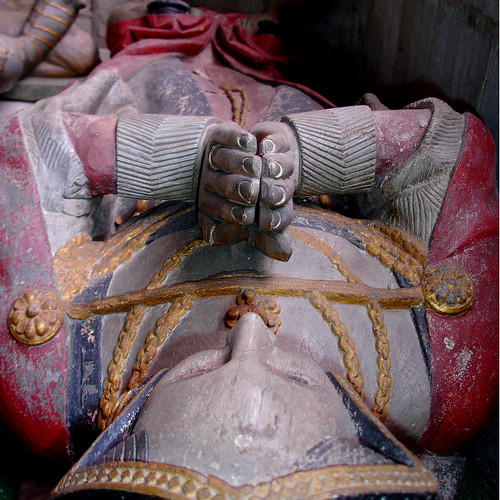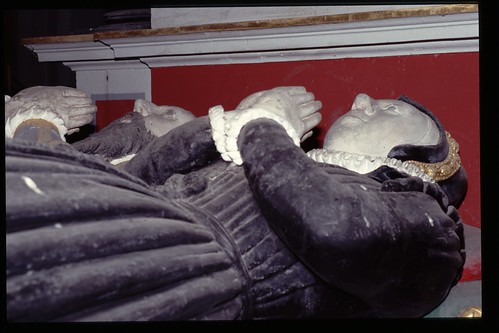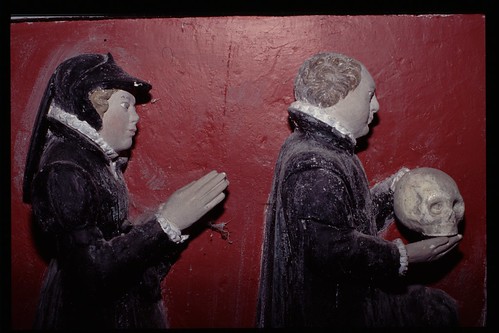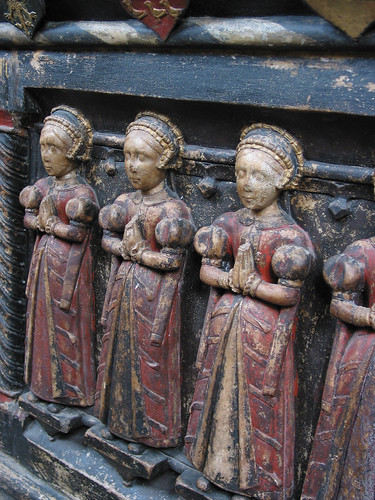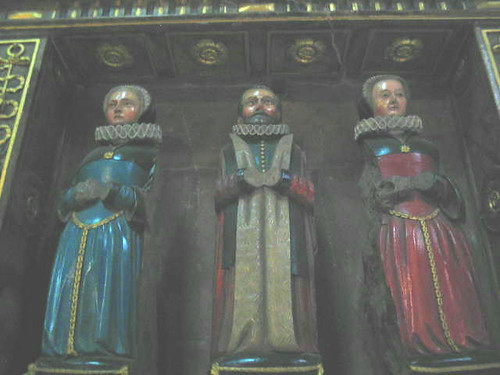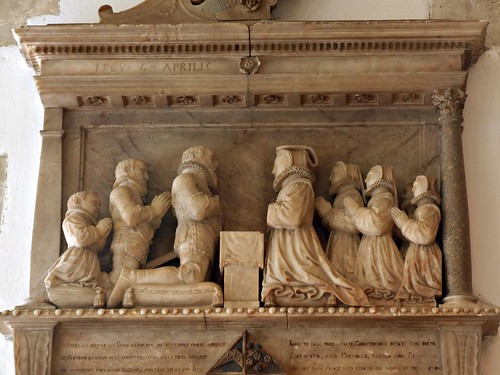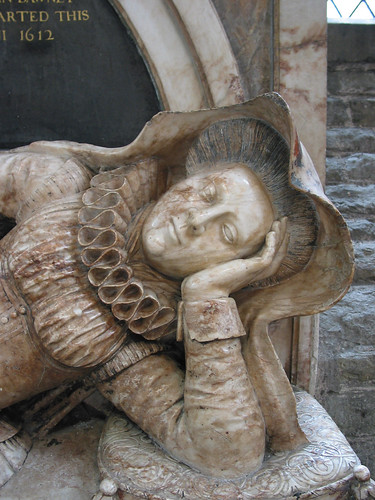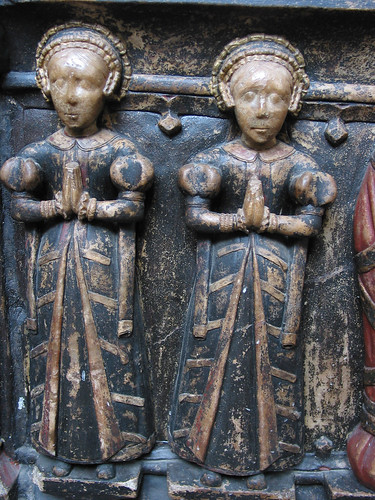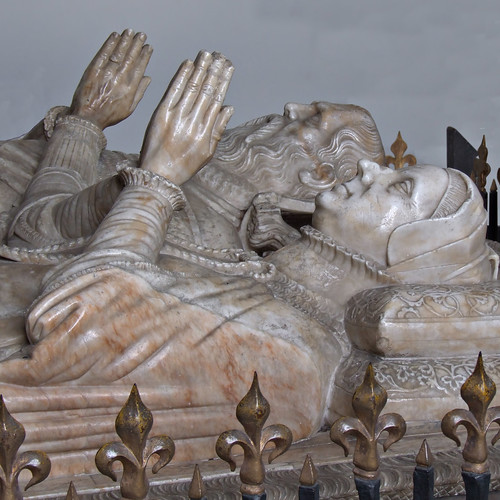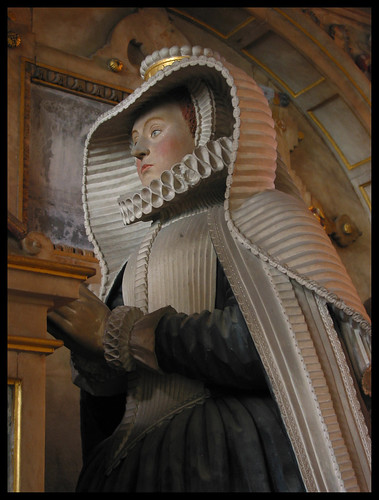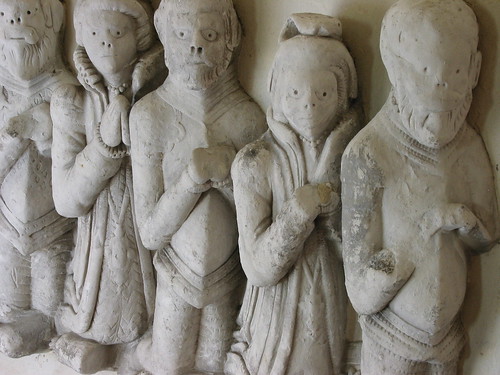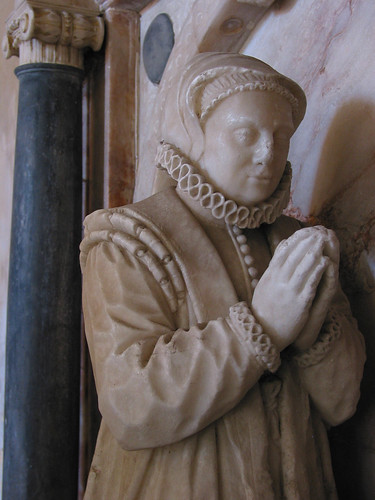Sir Michael Dormer, c1616
This one is slightly out of the period we are focusing on, but interesting as further evidence of the amount of fabric in underskirts, petticotes etc.
Lia says:
Interesting as this is, I am not convinced this is proof of how much fabric there was in petticoats of the period.
Consider the angle - what would be visible from it, if the space was not _decoratively_ filled with curving hemlines?
In fact, if we look instead at the pattern for a petticoat as drawn by Alcega we see that there is not all that much fabric there. Certainly not enough to fill the entire floorspace of a standing woman with curls within swirls of yardage.
That said, this is a fantastic resource you've pulled together, and I thank you so much for the time you spend finding us pictures of fantastic statues. Effigies tends to be forgotten as a source of inspiration.
Jane replies:
Valid points. But as far as what they would do to fill the void - in my opinion - nothing. They would just leave it flat. Why put all that extra work in cutting the folds if that wasn't what people expected to see?
As far as Alcega goes, don't forget, that is only one source. And is that top layers or under layers?
My theory is that they had quite fitted, A-line top layers and used very bulky underlayers, to get the conical shape we often attribute to farthingales.
I've noticed this with my own clothing. My green overgown is fitted, not gathering but when I wear a couple of dresses under it, which have gathered waists and therefore quite alot of fabric compared to the top/green coat layer, it gets the correct silouette even though I'm not wearing a farthingale or corded petticote.
Just a theory, but one worth considering, especially for lower classes.
